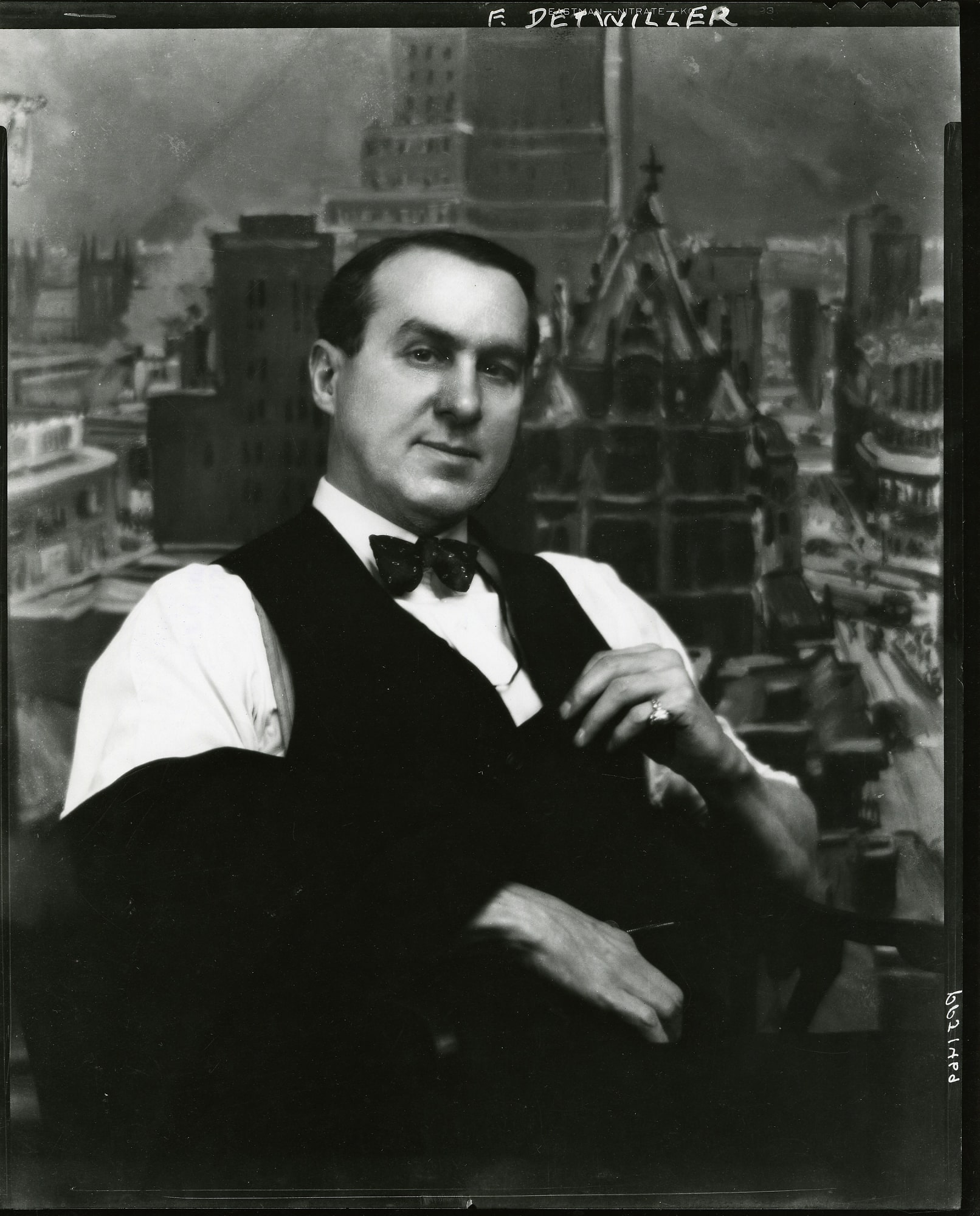The son of a doctor and the grandson of Henry Detwiller, one of the first homeopathic physicians in the United States, Frederick Detwiller expressed an early interest in art and won a school drawing contest at the age of eleven. At the urging of his father, however, Detwiller originally pursued a career in law. It wasn’t until 1908, when he was twenty-six, that he turned his attention professionally to art. He studied architectural design and painting at Columbia University before advancing his education in Europe. At the start of World War I, in 1914, he returned to the United States and established a studio in New York City, where he joined several artists’ associations including the Salmagundi Club, Society of Independent Artists, and The Artists’ Fellowship, Inc., an organization dedicated to aiding artists unable to work, and began exhibiting his work in solo and group shows. Detwiller’s art focuses on architecture (the New York City skyline in particular) as well as scenes from New England fishing villages and seascapes—the artist lived in Noank, CT, from 1917–1921 and made frequent visits to New Harbor, ME.
Detwiller’s connections to Gallup and/or New Mexico are unknown. His archives, located at Skillman Library at Lafayette College, include his writings (speeches, articles, letters) on topics such as the need for increased public support for the arts, opposition to juried exhibitions, wrongful taxation of artists, and advocacy for the preservation for Native American art. Perhaps a combination of his progressive views on arts policy and his interest in Native art prompted him to heed fellow East Coast artist Albert Lorey Groll’s call for support of a potential museum in Gallup during the New Deal.


